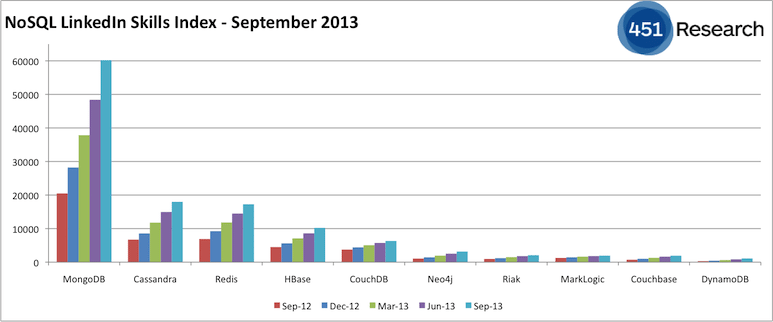 One of my favorite events of the year is Hadoop World. It is, as the name suggests, about Hadoop and the mission supporting applications a Hadoop-based framework can support. It is an event packed full of content on serious Hadoop related topics like Impala, Sentry, Cloudera Search or “How to Build a Hadoop Data Application.”
One of my favorite events of the year is Hadoop World. It is, as the name suggests, about Hadoop and the mission supporting applications a Hadoop-based framework can support. It is an event packed full of content on serious Hadoop related topics like Impala, Sentry, Cloudera Search or “How to Build a Hadoop Data Application.”
It is also a great place to connect directly with people who make up this community. Since these people are all savvy on far more than just Hadoop the side-bar conversations are always great. One thing I hope to get insight on next week is the high drama in the tech community around MongoDB.
I imagine you have already been checking out MongoDB. It is really an exciting approach. It is an open source document database and is a key force in the NoSQL world. It is a key force for many reasons, including an asserted ability to scale without compromising functionality, an ability to query in rich ways, an ability to update really fast, flexible ways to aggregate and process data (Map/Reduce). More importantly, it has a very strong community around it including a large group of skilled developers who know MongoDB.
The open source MongoDB is supported by a commercial company called… MongoDB (they were once called 10gen). And that company has some real champions at its helm and technologists I deeply respect. They also have a highly regarded federal team. There is lots to love here.
But, there is drama! And even technologists love drama don’t we?
Here is more:
Dave Kellog, a great business leader, thinker, tech watcher and blogger, captured some important thoughts on the massive $150M funding round raised by MongoDB. This was said to be the largest in the history of databases. This brings the total of funding for MongoDB the company to $231M, making it the best funded database/big data technology on the market now. Pretty serious and should get your attention. Dave went on to offer important opinions on what this means. He said:
The two winners of the next-generation NoSQL database wars have been decided: MongoDB and Hadoop. The faster the runner-ups figure that out, the faster they can carve off sensible niches on the periphery of the market instead of running like decapitated chickens in the middle.
The first reason I say this is because of the increasing returns (or, network effects) in platform markets. These effects are weak to non-existent in applications markets, but in core platform markets like databases, the rich invariably get richer. Why?
- The more people that use a database, the easier it is to find people to staff teams so the more likely you are to use it.
- The more people that use a database, the richer the community of people you can leverage to get help
- The more people that build applications atop a database, the less perceived risk there is in building a new application atop it.
- The more people that use a database, the more jobs there are around it, which attracts more people to learn how to use it.
- The more people that use a database, the cooler it is seen to be which in turn attracts more people to want to learn it.
- The more people that use a database, the more likely major universities are to teach how to use it in their computer science departments.
Dave then went on to underscore his points by showing a graph from 451 Research that shows graphically how MongoDB skilled developers are more available. From the 451 Groups’ LinkedIn NoSQL skills analysis

Dave’s analysis is compelling. I believe in Hadoop and I believe in MongoDB. I believe these will be dominate in the future of the NoSQL space.
But there are issues, including issues we technologists should understand at a deep level so we can better assess when to leverage MongoDB and when to select alternatives.
One key issue articulated well by hacker and Cornell professor Emin Gün Sirer is the issue of non-durable un-verifiable writes. Sounds serious isn’t it? You bet, and that is where the drama really comes in. The database and the firm behind it, that will be one of the two major players in NoSQL, is pretty much being called out for non-durable, un-verifiable writes. Why would anyone want a database like that? There are use cases, but not for the serious enterprise. The way Bryce Nyeggen puts it in “The Genius and Folly of MongoDB” is: “…right now, MongoDB is clown shoes.”
There have been many other issues and lots of teasing from key players in the big data world. The laughter reached clown circus proportions when MongoDB posted a blog meant to offer helpful advice to those faced with the difficulties of scaling to a measly 100GB (see: MongoDB mocked after posting “100GB Scaling Checklist“.
So now we see the drama and the question we all need to dwell on: Is MongoDB goofy clown shoes or one of two dominate NoSQL forces? Can they be both?